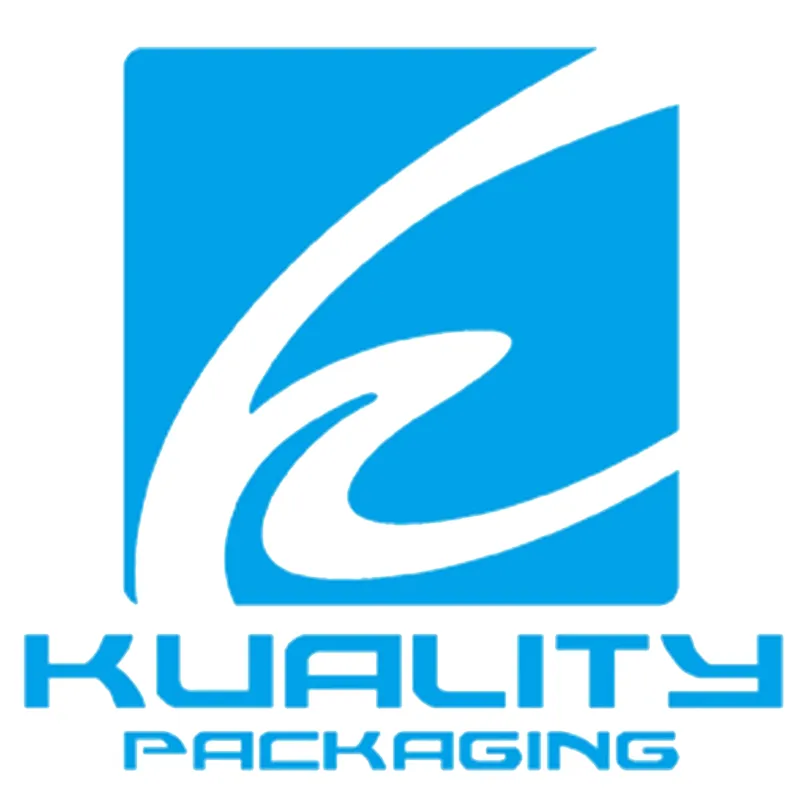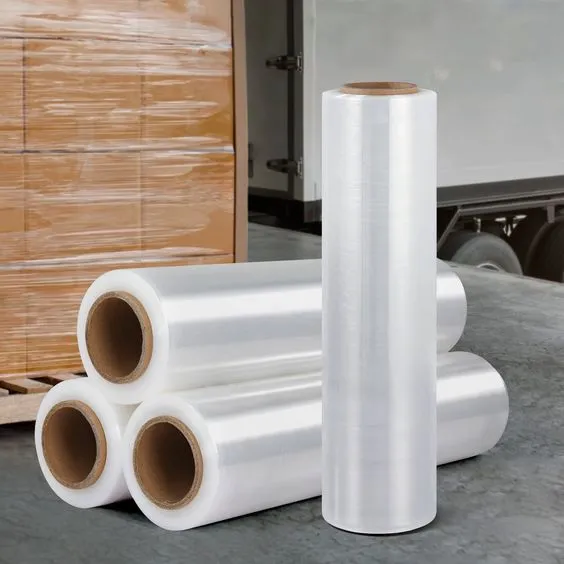
Flexible packaging has quickly become mainstream in almost all modern markets and industries, playing an important role in protecting goods, ensuring sealed preservation, preventing wear, and extending shelf life. However, with the development of the market economy, the demand for flexible packaging in all walks of life will naturally continue to increase. Therefore, the continuous development of flexible packaging materials and processing technology is significant in many fields. Below, 후이양 포장 will give you a detailed introduction to the manufacturing process of flexible packaging, from the selection of raw materials to the quality control of the final product, to the development trends of the industry, and learn more about it to ensure that you make the right investment when looking for packaging options.
Materials used in flexible packaging manufacturing
Flexible packaging materials are thin and light, and offer advantages such as cost-effectiveness, convenience, and versatility. They are usually made up of multiple layers that provide properties that protect goods, such as barrier protection against moisture, oxygen, light, and contaminants. We will find that different customers and manufacturers prefer to use other materials. Therefore, you may wonder which are the important flexible packaging materials. Some of the most commonly used materials in the manufacturing industry include plastic films (such as polyethylene, polypropylene, and polyester), aluminum foil, paper, and laminates.
- Plastic film is currently the most commonly used type of material in flexible packaging (such as polyethylene PE, polyester PET, biaxially oriented polypropylene BOPP). It is widely used because of its high transparency, lightweight, and good strength.
- Paper provides a good printing surface and environmentally friendly properties. Although the paper used to produce flexible packaging is different from the paper used for writing, the manufacturing method is similar. Paper is ideal for eco-friendly brands and converters, as it comes from a renewable resource, is often compostable or recycled, and can reduce the amount of plastic used in flexible packaging.
- Aluminum foil, on the other hand, enhances barrier properties, effectively preventing the penetration of light, oxygen, and moisture. Foil is a necessity for barrier applications because it effectively blocks harmful substances. It can also be used to provide a reflective finish to packaging for aesthetic purposes.
In addition, there are high-barrier materials such as EVOH (ethylene vinyl alcohol copolymer), which are designed for products that require a high degree of protection. With the advancement of technology, new materials such as smart packaging materials 그리고 biodegradable materials are gradually being used in flexible packaging to meet the market’s pursuit of packaging sustainability and interactivity.
The art of printing technology
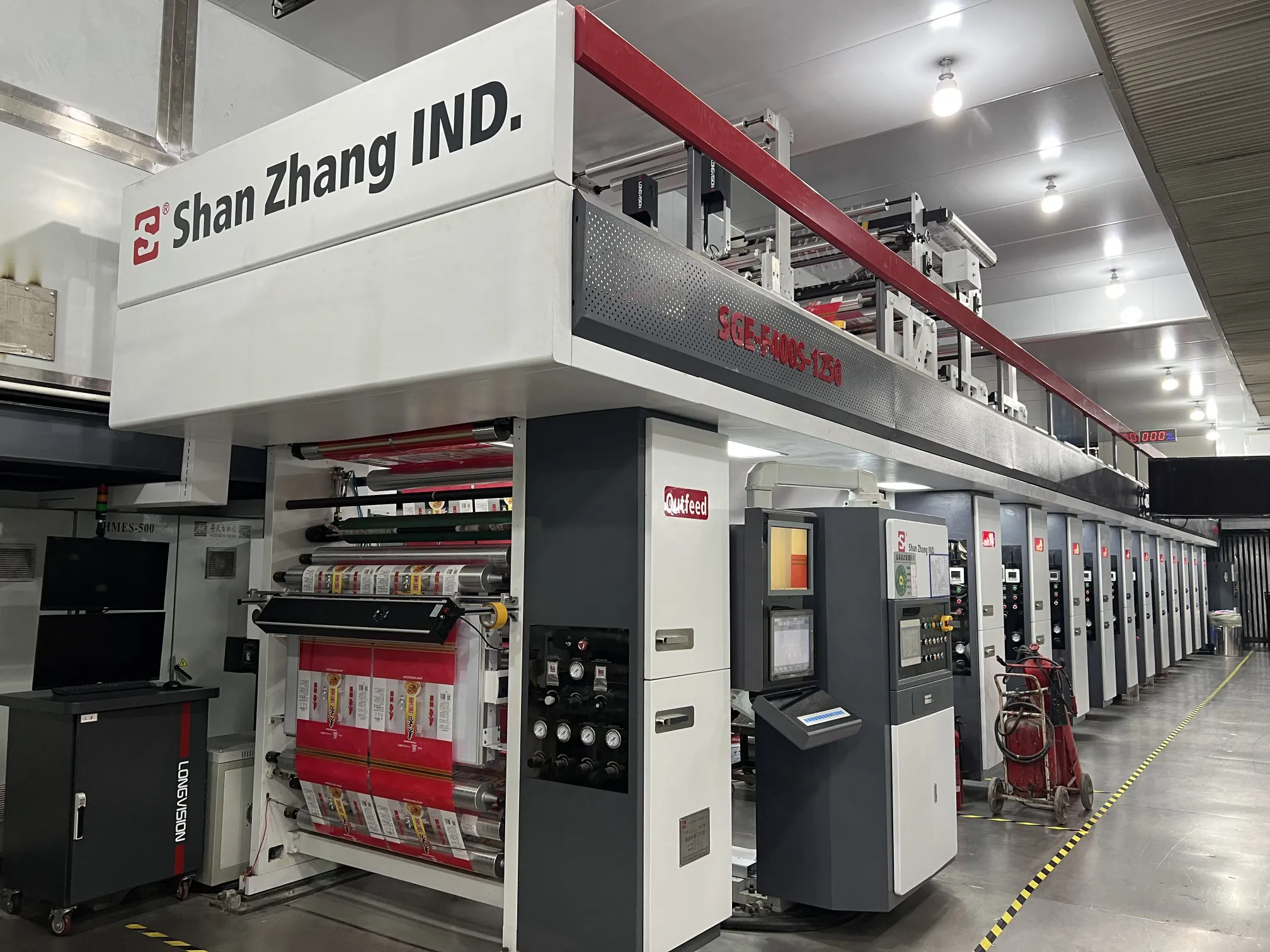
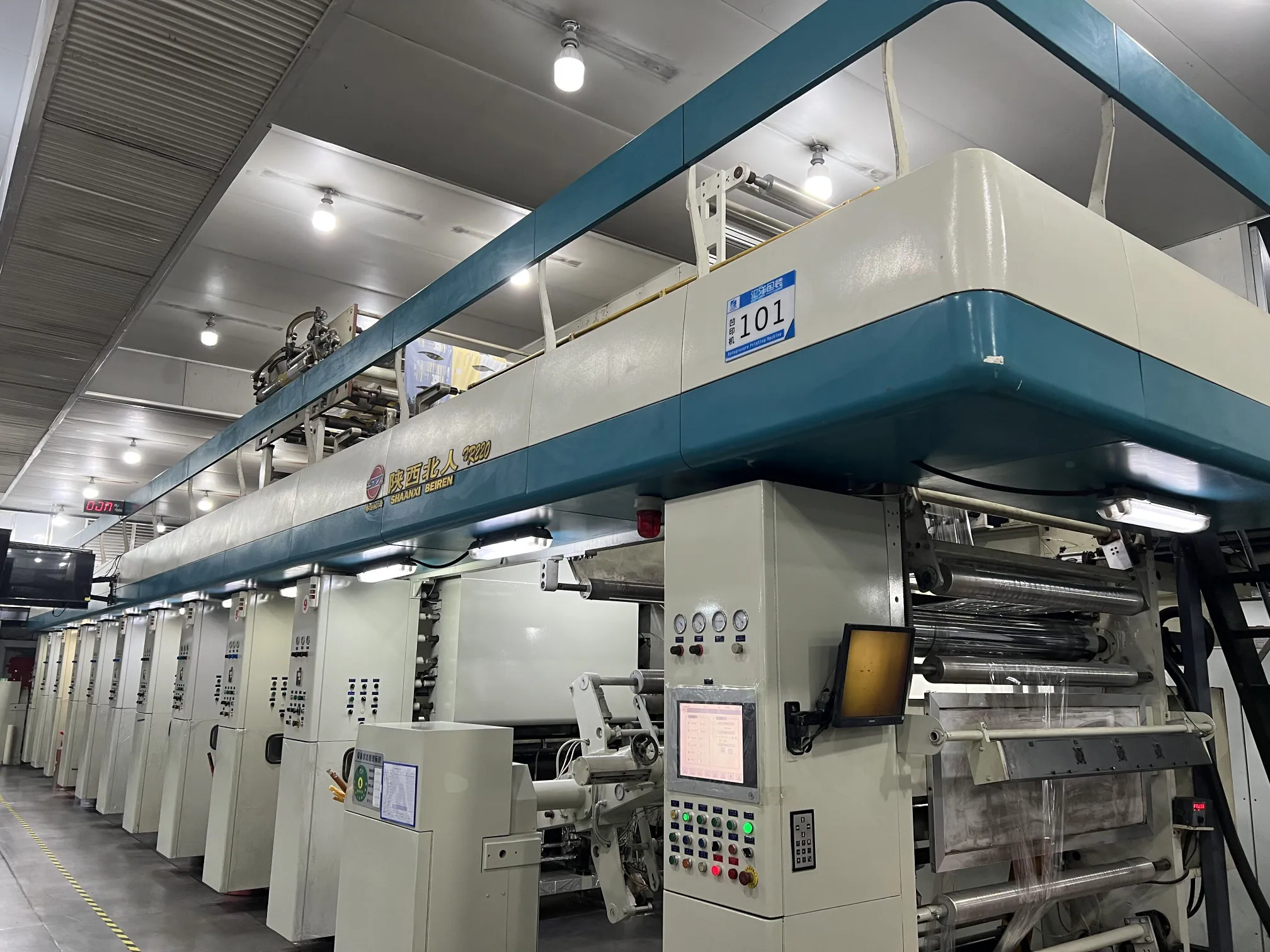
Before printing, precise plate-making is required to ensure the accurate transmission of the design pattern. Digital plate-making technology improves efficiency and accuracy while supporting small-batch customization.
The choice of printing process has a profound impact on the visual effect, production efficiency, and even environmental protection properties of flexible packaging. Each printing method has unique advantages and is suitable for different production needs and market positioning.
- Gravure printing has high ink transfer efficiency, rich colors, and high saturation, which is very suitable for printing large-area color blocks and continuous tone images, and can present a good visual effect. Its printing quality is stable and durable, suitable for long-run printing;
- Flexographic printing is environmentally friendly and uses water-based or UV-curable inks to reduce VOC emissions. Its plate-making speed is fast and the cost is relatively low, which is suitable for medium and short-run printing, especially in the field of food packaging because it is less sensitive to the environment;
- Offset printing is good at printing fine lines, small fonts, and halftone images, with high resolution and accurate color reproduction. It is suitable for a variety of printing materials, especially paper, and is the first choice for high-quality printing; The biggest features of digital printing are flexibility and personalization. It does not require plate making and is directly output from digital files. It is suitable for short-run, variable data printing, and personalized packaging. It can respond quickly to market changes, shorten production cycles, and reduce inventory costs.
When choosing a printing process, it is necessary to comprehensively consider design requirements, production batches, cost budgets, environmental protection requirements, and market positioning. For example, high color saturation and long print runs are suitable for gravure printing; environmental protection and short runs with fast response are suitable for flexographic printing or digital printing.
The subtlety of composite technology
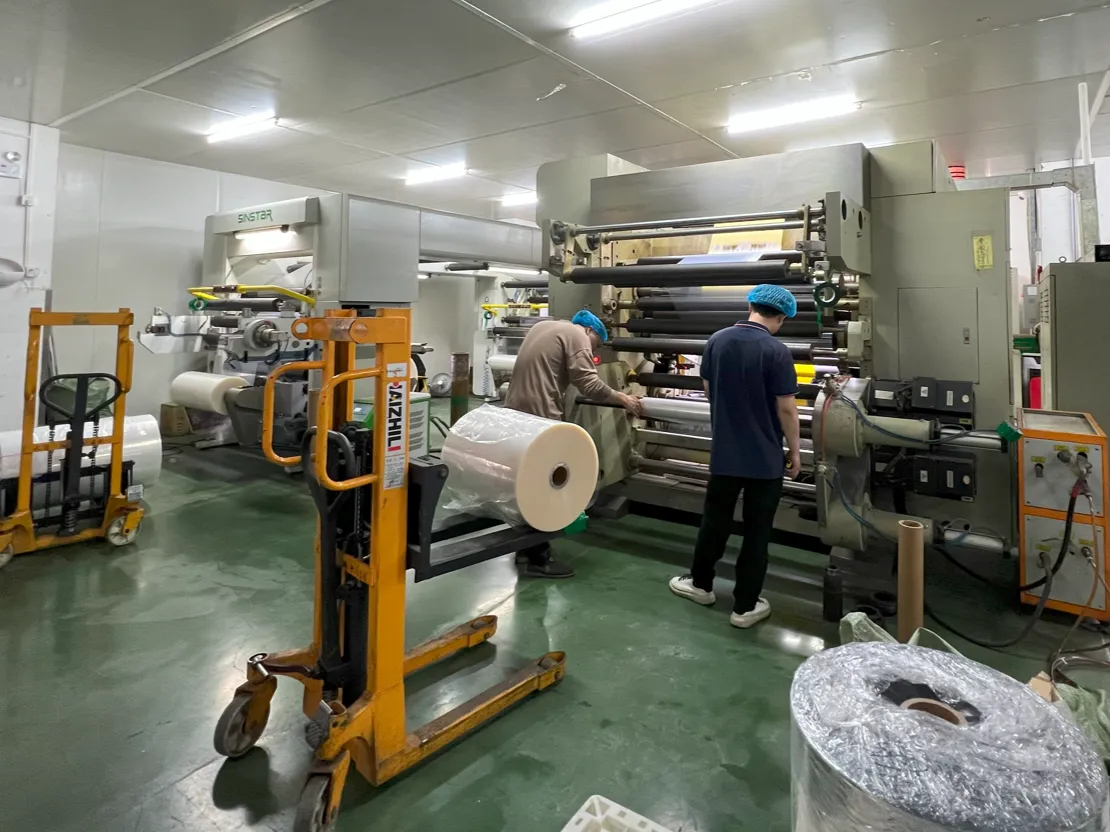
Combination principle
Multiple layers of substrates are combined through adhesives to form a composite film with multiple protective properties. Composite not only enhances the overall strength of the packaging, but also achieves specific functional requirements, such as moisture-proof, light-proof, and high-temperature resistance.
Comparison of composite methods
Composite technology in flexible packaging is one of the key steps to determine the performance of packaging materials. Different composite methods have their own advantages and disadvantages. It is crucial to choose the right method for different needs.
Dry lamination: Dry lamination technology is mature, easy to operate, fast in production, and can efficiently combine different material layers tightly, making it suitable for large-scale production. It can provide strong interlayer adhesion to ensure the mechanical strength and barrier properties of the packaging.
Wet lamination: It is particularly suitable for the lamination of high-barrier materials, such as aluminum foil, EVOH, etc. It can form an excellent barrier layer, effectively prevent the penetration of gas and moisture, and extend the shelf life of the product. In addition, the water-soluble adhesive used in wet lamination is more environmentally friendly.
Solvent-free lamination: Using 100% solid content adhesive, it does not contain volatile solvents, greatly reducing VOCs emissions and is environmentally friendly. This not only improves the working environment, but also complies with increasingly stringent environmental regulations.
Water-based laminated: Also characterized by environmental protection, using water as the adhesive for the dispersion medium, have low VOC emissions and are friendly to the human body and the environment. Suitable for markets and products with high environmental requirements.
Precision in bag making and forming
Automated bag making
Modern equipment can efficiently complete complex processes from cutting, folding, heat sealing to punching, ensuring the consistency and quality of each bag.
Cutting: The automated cutting system uses advanced computer control technology and high-precision cutting tools to quickly and accurately cut large rolls of composite film or prefabricated composite materials into required small pieces or strips according to preset sizes and shapes, in preparation for the subsequent bag-making process. This process can achieve continuous operation and reduce material waste.
Heat sealing: Heat sealing is to apply heat and pressure to the folded edge by heating elements, so that the hot melt layer in the material melts and re-solidifies after cooling to form a firm seal. Automated heat sealing machines can accurately control temperature, time and pressure to ensure that the seal is both beautiful and airtight. For packaging materials of different materials and thicknesses, heat sealing parameters can be flexibly adjusted to achieve the best sealing effect.
Punching and special treatment: According to packaging requirements, automated equipment can also punch holes (such as ventilation holes, hanging holes) or perform other special treatments (such as adding tear lines and easy-tear edges) on bags. Punching has high precision and consistent positions, which can meet functional requirements without affecting the overall appearance and strength of the packaging.
Quality inspection and rejection: During the entire bag-making process, the automated system will also integrate functions such as visual inspection and weight inspection to monitor each bag in real time to ensure that no defective products flow out. Once unqualified products are detected, such as poor sealing, dimensional deviation or material defects, the system will automatically reject them to ensure the quality of the final product.
Counting and Packaging: Finally, qualified bags will be automatically counted, sorted and sent to the packaging machine for packaging, ready to enter the next logistics or warehousing link. This process is also highly automated, reducing manual intervention and improving efficiency.
Special molding technology
Special molding technology plays an important role in the flexible packaging industry, especially in meeting the market demand for packaging diversification, functionality and convenience. It is aimed at packaging products with complex structures such as stand-up bags and self-supporting zipper bags.
Rigorous quality control
We follow international and regional safety standards, such as ISO, FDA, etc., and use high-precision testing instruments to strictly test the physical properties and chemical composition of packaging. The application of online testing systems has greatly improved testing efficiency and accuracy.
Environmental protection and sustainable future
Green materials: The research and development and application of bio-based plastics and degradable materials aim to reduce the impact on the environment and conform to the trend of global sustainable development.
Circular economy: Promote the recycling and reuse of packaging materials, build a closed-loop supply chain, and reduce resource consumption and waste generation.
Exploration of intelligence and personalization
Intelligent packaging: By embedding RFID tags, temperature and humidity sensors and other technologies, the packaging is made interactive, improving the user experience and optimizing logistics management.
Customized services: Digital technology makes small-batch and personalized packaging possible, meeting the needs of market segmentation and brand differentiation.
Want to learn more
The manufacturing process of flexible packaging involves several steps to ensure that the product meets the requirements. They also use a variety of raw materials depending on the customer’s requirements for the product. It is worth noting that the use of the flexible packaging will determine the kind of raw materials that will be used. With different types of flexible packaging, companies can be more flexible to find what they need.
Are you interested in flexible packaging bags? 후이양 포장 has been producing flexible packaging bags for 식품 포장 백 and daily chemical packaging for more than 25 years. We provide various types of flexible packaging bags, including self-supporting bags, spout bags, flat bottom bags, three-side seal bags, fin seal bags, and four-side seal bags. We assist in selecting materials and designs, and provide filling assistance, and there are also customizable options.
Whether you are a new flexible packaging converter who has questions about which materials and processes to use, or a printer who is considering entering the flexible packaging industry, our experts and solution managers are always available to provide consultation. Contact a member of our team today to learn more about sustainable packaging bags or get detailed guidance on laminates and films, equipment, workflows, processes, and more.
